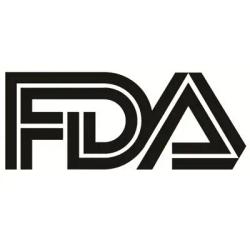
OR WAIT null SECS
Risankizumab Effective as Treatment for Psoriasis in Genital, Scalp Regions
These phase 4 data from the UnlIMMited trial highlight the efficacy and safety of risankizumab for psoriasis in the genital or scalp region.
Risankizumab is an effective and safe treatment of moderate-to-severe psoriasis in the genital and scalp regions, new data suggest.1
These phase 4 data resulted from an analysis authored by investigators such as Eingun James Song, MD, director of clinical research at Frontier Dermatology. Song and his coauthors highlighted the disproportionately high level of discomfort and psychosocial issues commonly faced by individuals living with the genital or scalp regions, despite the condition’s often limited body surface area (BSA) involvement.
The condition’s location, despite limited BSA, frequently results in marked impairments. Consequently, those with psoriasis limited to these sensitive or visible regions are not often involved in clinical research, and may be overlooked for biologic agents, which are typically reserved for those living with more extensive psoriasis.
Recent clinical guidance, however, emphasized that those with psoriasis in these high-impact regions of the body should be considered appropriate candidates for advanced medications, including biologics. In light of such information, the phase 4 UnlIMMited study (NCT05969223) was designed by Song et al to assess the efficacy and safety of risankizumab, an interleukin (IL)-23 inhibitor approved for moderate-to-severe psoriasis, compared with placebo in adult patients.
In the UnlIMMited analysis, there were 2 parallel, double-blind, randomized, placebo-controlled, multicenter studies: study-G, in which investigators focused on genital psoriasis, and study-S, in which investigators looked at disease impacting the scalp. Those considered to be eligible as participants were adults with moderate-to-severe psoriasis affecting either their genital or scalp regions. Additionally, these subjects would have total BSA involvement of either less than 10% or 10% or greater.
In each of these 2 studies, those involved were randomized by Song and colleagues in a 1:1 ratio to be treated either with risankizumab 150 mg or placebo at the 0 and 4-week marks. The investigators looked at their primary efficacy endpoints at the 16-week mark, defined as the proportion of subjects in the analysis attaining a static Physician’s Global Assessment of the Genitalia (sPGA-G) score of 0 or 1 in study-G. In study-S, the main endpoint was a scalp Investigator Global Assessment (IGA) score of 0 or 1.
At Week 16, Song and coauthors’ secondary endpoints included additional measures of improvement of patients’ skin, skin clearance, and patient-reported quality of life. Additionally, throughout the 16-week period of study, the investigative team looked into safety outcomes. Risankizumab was shown, by the team’s conclusion, to have demonstrated statistically and clinically significant genital and scalp psoriasis improvements over placebo. The investigators found, in study-G, 69.1% of those in the risankizumab cohort attained an sPGA-G score of 0 or 1. This was compared to only 13.0% of those in the placebo cohort (P < .0001).
Similarly, in study-S, 60.8% of risankizumab-treated patients reached a scalp IGA score of 0 or 1 versus 13.0% in the placebo group (P < 0.0001). These findings underscore the robust efficacy of risankizumab in inducing skin clearance in two particularly burdensome forms of psoriasis. Importantly, no new safety signals were observed in either study during the first 16 weeks of treatment.
Song et al did highlight, however, the relatively limited sample size of the UnlIMMited studies, though they noted both trials were adequately powered to detect statistically significant distinctions between treatment arms. Another potential limitation was the lack of broader psoriasis population representation in the enrolled subjects, given concurrent involvement of other high-impact regions had not been assessed.
Nevertheless, the inclusion of those with varying BSA involvement levels enhanced the generalizability of these data. Long-term efficacy and safety data are also slated to be assessed through the 52-week mark.
“Risankizumab is effective for the treatment of genital and scalp PsO, and no new safety signals were identified,” Song and coauthors concluded.1 “These results provide additional evidence for the efficacy and safety of risankizumab for the treatment of PsO, including in hard to treat, high-impact areas.”
References
Song EJ, Ehst B, Ackerman L, et al. Efficacy and Safety of Risankizumab in Genital or Scalp Psoriasis in the UnlIMMited Phase 4 Randomized Clinical Trial at Week 16. Dermatol Ther (Heidelb). 2025 Oct 25. doi: 10.1007/s13555-025-01544-6. Epub ahead of print. PMID: 41139175.
Song EJ, Ackerman L, Anschutz T, et al. Safety and Efficacy of Risankizumab in Genital and Scalp Psoriasis in the UnlIMMited Phase 4 Randomized Clinical Trial at Week 16. Poster presented at the DERM 2025 NP/PA CME Conference; July 23 - 26, 2025; Las Vegas, Nevada.


